
The high frequency (HF) range is an important part of the electromagnetic spectrum. It is a band of frequencies that are between 3 and 30 megahertz (MHz). The HF range is widely used for communication purposes due to its ability to transmit signals over long distances.
Modulation and demodulation are key processes in the HF frequency range. Modulation involves changing the properties of a wave in order to carry information, while demodulation is the process of extracting the information from the modulated wave. These processes are crucial for sending and receiving data in HF communication.
An antenna plays a significant role in the HF frequency range. It is responsible for transmitting and receiving signals. Antennas come in various types and designs, each suited for different communication needs. Effective antenna design is essential for maximizing the power and range of communication signals.
Propagation and interference are important factors to consider in the HF frequency range. Propagation refers to how a wave travels from a transmitter to a receiver, and interference occurs when other signals or noise affect the clarity of the transmitted signal. Understanding propagation and minimizing interference is crucial for maintaining clear communication in the HF frequency range.
Contents
- 1 What is Hf Frequency?
- 2 Importance of Hf Frequency
- 3 Hf Frequency Range
- 4 Hf Frequency in Communication
- 5 Factors Affecting Hf Frequency
- 6 FAQ about topic “Hf Frequency Range: Everything You Need to Know”
- 7 What is the frequency range of Hf?
- 8 Why is the Hf frequency range important?
- 9 How is the Hf frequency range different from other frequency ranges?
- 10 What are the advantages of using the Hf frequency range?
- 11 Can the Hf frequency range be used for data transmission?
What is Hf Frequency?
The term HF stands for High Frequency. HF frequency refers to a range of electromagnetic frequencies that fall between 3 and 30 megahertz (MHz). This frequency range is commonly used for communication purposes due to its unique characteristics.
HF frequency modulation allows the transmission of data, voice, and other forms of communication signals through the airwaves. These signals are carried by an HF wave, which is a type of electromagnetic wave with a specified frequency and amplitude.
One of the advantages of HF frequency is its ability to propagate over long distances. HF waves have the capability to bend around curves in the Earth’s surface and bounce off the ionosphere, allowing for long-range communication. This makes HF frequency ideal for applications such as long-distance radio broadcasting, maritime communication, and aircraft communication.
However, HF frequency is not without its challenges. Due to the higher frequency range, HF signals are prone to interference and noise. This can be caused by various factors, such as atmospheric conditions, solar activity, and man-made sources. The interference and noise can affect the quality and reliability of the received signal.
To overcome these challenges, antenna systems designed for HF frequency are used to transmit and receive signals. These antennas are specifically designed to resonate at the desired frequency and optimize the power transfer between the transmitter and receiver. Additionally, advanced demodulation techniques are employed to extract the original data from the received signal, while minimizing the impact of interference and noise.
In summary, HF frequency is a range of electromagnetic frequencies used for communication purposes. It offers the ability to propagate over long distances, but is susceptible to interference and noise. The use of specialized antennas and demodulation techniques helps overcome these challenges, enabling reliable communication within the HF frequency range.
Importance of Hf Frequency
The HF frequency range, also known as the High-Frequency band, plays a crucial role in communication systems. Its importance lies in its unique capabilities for long-distance propagation of radio waves.
The HF frequency range, typically ranging from 3 to 30 MHz, allows radio waves to travel long distances due to the properties of the ionosphere. The ionosphere, a layer of electrically charged particles in the Earth’s upper atmosphere, enables the reflection and refraction of HF waves. This phenomenon, known as skywave propagation, allows HF signals to reach far beyond the line-of-sight range.
HF frequency is particularly important for long-range communication, especially in scenarios where other transmission bands are limited. For example, in remote areas, harsh terrain, or over vast oceans, HF frequencies provide reliable communication channels. This can be crucial for emergency response, military operations, or maritime communication.
Another critical aspect of HF frequency is its ability to mitigate interference and noise. Due to its unique frequency range, HF signals are less affected by man-made electromagnetic interference compared to higher frequencies. This makes HF ideal for communication in noisy environments or areas with limited infrastructure.
HF frequencies also offer a wide bandwidth, which enables the transmission of more data. By using techniques such as amplitude modulation (AM) and demodulation, HF signals can carry voice, data, and even digital signals. This versatility makes HF frequency suitable for various communication needs, including voice communication, data transfer, and even broadcasting.
Antennas designed for HF frequencies are typically larger and more efficient compared to those used for higher frequency bands. This allows for improved signal reception and transmission. These antennas can be designed to operate over a broad range of frequencies within the HF spectrum, making them versatile for various communication purposes.
In conclusion, the importance of HF frequency lies in its unique propagation characteristics, its ability to mitigate interference and noise, and its versatility in supporting different communication needs. Whether it is for long-range communication, noise-resistant signaling, or efficient data transmission, HF frequencies play a vital role in modern communication systems.
Hf Frequency Range
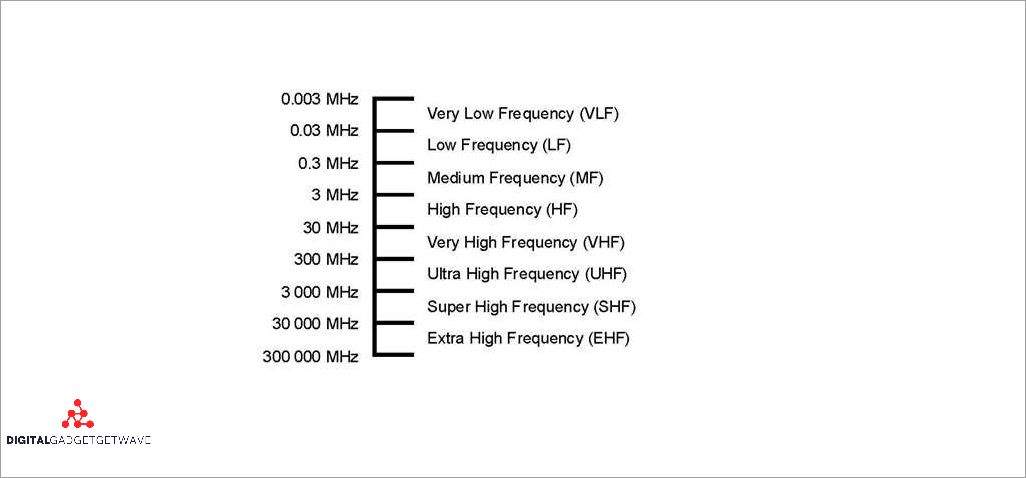
The HF frequency range, also known as the high-frequency range, refers to the portion of the electromagnetic spectrum that encompasses frequencies between 3 and 30 MHz. This range is widely used in various communication systems due to its unique characteristics.
In the HF frequency range, signals are able to travel long distances through the atmosphere by bouncing off the ionosphere. This allows for long-range communication, making it particularly useful for applications such as long-distance radio broadcasting and international shortwave communication.
HF signals can be received and transmitted using specialized antennas that are designed to operate within this frequency range. These antennas are typically larger in size compared to those used for higher frequency bands, as the physical dimensions of the antenna are directly related to the wavelength of the signal.
One of the challenges of using the HF frequency range is dealing with interference and noise. Due to the propagation characteristics of HF waves, they are susceptible to various forms of interference, such as atmospheric noise, man-made noise, and interference from other radio signals. This can affect the quality and reliability of the received signal.
To mitigate these issues, various techniques can be employed, including filtering and demodulation. Filtering helps to reduce unwanted frequencies and noise, while demodulation allows the extraction of the original data or voice signal from the modulated carrier wave.
Modulation and demodulation techniques are crucial for efficient communication within the HF frequency range. Modulation is the process of varying the amplitude, frequency, or phase of a carrier wave to encode information, while demodulation is the reverse process of extracting the original information from the modulated carrier wave.
Overall, the HF frequency range plays a significant role in long-range communication, offering reliable and efficient transmission of data and voice signals. Despite the challenges posed by interference and noise, advancements in technology continue to improve the performance and capabilities of systems operating within this frequency range.
Definition of Hf Frequency Range
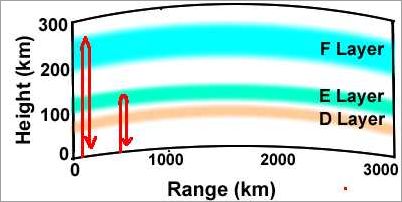
The HF frequency range, also known as the high-frequency range, refers to a specific portion of the electromagnetic spectrum. This range spans from 3 to 30 megahertz (MHz) and is commonly used for various types of communication.
In the HF frequency range, power is used to transmit and receive data through the airwaves. The transfer of information is achieved by modulating the HF wave with the desired data, using methods such as amplitude modulation (AM) or frequency modulation (FM).
One of the key features of the HF frequency range is its ability to propagate over long distances. This is achieved through a phenomenon called skywave propagation, where the HF signals are reflected back to Earth’s surface by the ionosphere. This allows for long-range communication, especially useful in scenarios where direct line-of-sight communication is not possible.
However, the HF frequency range is also susceptible to various forms of interference. This includes noise from natural sources such as lightning and atmospheric events, as well as man-made interference from other electronic devices. These interferences can affect the quality and reliability of the communication signals.
To transmit and receive HF signals, antennas are used. These antennas are designed to efficiently radiate or capture the electromagnetic waves within the HF frequency range. The received signals then undergo demodulation to extract the original transmitted information.
In summary, the HF frequency range is a portion of the electromagnetic spectrum used for communication purposes. It allows for the transmission and reception of data through the modulation and demodulation of HF signals. While it offers long-range propagation capabilities, it is also vulnerable to various forms of interference that can affect signal quality.
Frequency Bands in Hf Range
Frequency bands in the HF (High Frequency) range are used for various forms of communication and transmission. The HF spectrum refers to the frequency range between 3 and 30 megahertz (MHz).
These frequency bands are divided into different bands or segments, each with its own set of allocated frequencies. The allocation of frequency bands depends on several factors, such as the availability of spectrum, power requirements, and interference considerations.
The HF frequency range is used for long-distance communication, including point-to-point communication, broadcasting, and military applications. The HF bands are particularly useful for long-range communication due to the unique propagation characteristics of the HF signals.
Modulation and demodulation techniques are used to transmit and receive data within the HF bands. Various modulation schemes, such as amplitude modulation (AM) and single sideband modulation (SSB), are commonly used to transmit voice, data, and other forms of information.
Antennas play a crucial role in HF communication. Different types of antennas, such as wire antennas and vertical antennas, are used to transmit and receive HF signals efficiently. The performance of an antenna is determined by factors like its length, height, and orientation.
The HF frequency bands are also susceptible to interference from various sources, including atmospheric noise and man-made sources. Noise and interference can degrade the quality of the received signal, requiring advanced signal processing techniques to improve reception.
The allocation of frequency bands in the HF range is carefully managed by international regulations and authorities. This helps ensure efficient utilization of the available spectrum and minimizes interference between different users.
Overall, the HF frequency bands provide a valuable range for communication and transmission, offering long-range capabilities and supporting various applications in different fields.
Applications of Hf Frequency Range
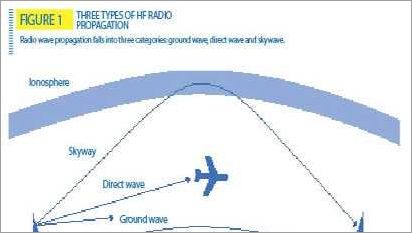
The Hf frequency range finds various applications in the field of communication. It is commonly used for long-distance communication, especially in areas where line-of-sight communication is not possible due to terrain or other obstacles. Hf waves have the ability to propagate over long distances by reflecting off the ionosphere, allowing for reliable communication over vast distances.
One of the key applications of the Hf frequency range is in amateur radio communication. Hf bands are allocated to amateur radio operators, who use them for two-way communication with other operators around the world. These operators utilize modulation techniques such as amplitude modulation (AM) or single sideband modulation (SSB) to transmit voice or digital data over the Hf waves.
Hf frequencies are also used in maritime communication. Ship-to-shore communication and ship-to-ship communication often rely on Hf waves to transmit signals over long distances. Hf waves have the advantage of being able to penetrate through the atmosphere and water, allowing for reliable communication even in challenging conditions.
The Hf frequency range is also used for shortwave broadcasting. Shortwave radio stations transmit their signals in the Hf range, which allows for global coverage. Listeners can tune in to these broadcasts using Hf receivers and antennas, and receive radio signals from around the world. Hf broadcasting is particularly useful in areas with limited access to other forms of media and communication.
Additionally, the Hf frequency range is utilized in various scientific and military applications. From conducting research in ionospheric propagation to long-range communications for military purposes, the Hf range plays a crucial role. The Hf band is also used for radar systems, ionosondes, and other scientific instruments that study the propagation of electromagnetic waves in the Earth’s atmosphere.
Hf Frequency in Communication
In communication, HF (high frequency) frequency range is widely used for transmitting data over long distances. HF frequency refers to the radio frequency range between 3 and 30 MHz. This range is particularly suitable for long-range communication due to its unique propagation characteristics.
HF waves have the ability to propagate over long distances by reflecting off the ionosphere, a region of the Earth’s upper atmosphere. This allows HF signals to travel beyond the line of sight, making it ideal for long-distance communication.
One of the key advantages of using HF frequency in communication is its resistance to interference. HF signals can penetrate obstacles such as buildings and are less affected by atmospheric conditions compared to other frequency bands. This makes them reliable for various applications, including maritime and aviation communication.
The HF frequency range is also an important part of the radio spectrum for amateur radio operators. They use HF bands for various activities, including voice communication, data transmission, and emergency communication.
To transmit and receive HF signals, special equipment such as transceivers and antennas are used. The transceiver is responsible for modulation and demodulation of the signal, while the antenna helps in transmitting and receiving the HF waves.
HF frequency signals are characterized by their amplitude, which corresponds to the strength of the signal. Power is an important consideration in HF communication, as it affects the signal’s range and reliability. Higher power can help overcome noise and interference, improving the quality of communication.
In conclusion, HF frequency plays a crucial role in long-distance communication. Its unique propagation characteristics, resistance to interference, and ability to penetrate obstacles make it an ideal choice for various applications. Whether it’s for amateur radio communication, maritime communication, or emergency communication, HF frequency is a reliable and effective solution.
Use of Hf Frequency in Radio Broadcasting
Radio broadcasting plays a vital role in communication, and the use of Hf frequency is crucial for transmitting and receiving radio signals. Hf stands for high frequency, and it falls within the range of 3 to 30 megahertz (MHz) on the electromagnetic spectrum.
Radio stations utilize the Hf frequency band to transmit their signals over long distances. This is possible due to the nature of Hf waves, which can travel far and penetrate obstacles such as buildings and terrain. The power of the transmitted signal is amplified by utilizing appropriate antennas, enabling the broadcast signal to reach a wide audience.
Hf frequency is also used for communication purposes in various industries, such as aviation and maritime. It allows for reliable long-range communication between aircraft, ships, and ground stations. Hf technology enables these industries to stay connected and exchange critical information, even in remote areas where other forms of communication may not be available.
The modulation and demodulation of the Hf frequency signal are essential for transmitting and receiving data. The frequency modulation (FM) technique is commonly used for broadcasting, where the amplitude of the signal remains constant, and only the frequency varies according to the audio content. This modulation technique ensures high-quality sound transmission over the Hf frequency band.
However, the use of Hf frequencies for radio broadcasting is not without its challenges. Interference from other signals and noise in the spectrum can affect the clarity and reliability of the received signal. Radio stations, therefore, carefully select their operating frequencies and employ efficient filters to minimize interference and improve the quality of their broadcasts.
In conclusion, the use of Hf frequency in radio broadcasting provides a means of efficient communication over long distances. It enables the transmission and reception of signals, allowing for the exchange of information and entertainment. Despite the challenges posed by interference, Hf frequency remains a valuable tool for the broadcasting industry.
Hf Frequency for Long-Distance Communication
In the field of communication, HF (High Frequency) frequency range plays a crucial role in long-distance communication. HF band ranges from 3 to 30 megahertz (MHz), making it ideal for transmitting signals over long distances.
One significant advantage of using HF frequencies for long-distance communication is their ability to propagate through the Earth’s ionosphere. HF waves are able to bounce off the ionosphere and travel long distances by undergoing multiple reflections. This makes HF frequencies suitable for communication between distant locations.
Another advantage of HF frequencies is their ability to penetrate obstacles and interference. HF waves are less affected by noise and interference compared to higher frequency bands. This makes HF an excellent choice for communication in remote and challenging environments, such as in rural areas or during natural disasters.
HF frequencies are also used for data transmission. By using different modulation techniques such as amplitude modulation (AM) and frequency modulation (FM), data can be encoded and transmitted over the HF spectrum. The use of HF frequencies allows for long-range data transmission, making it valuable for applications such as maritime communication and military operations.
To transmit and receive HF signals, specialized antennas are used. These antennas are designed to efficiently transmit and receive HF waves, allowing for effective long-distance communication. The design of these antennas is optimized for the specific frequency range of HF signals.
In summary, HF frequencies play a crucial role in long-distance communication. Their ability to propagate through the Earth’s ionosphere, resistance to noise and interference, and capability for data transmission make them an ideal choice for communicating over long distances. By leveraging HF frequencies and proper modulation and demodulation techniques, reliable and efficient communication can be achieved across vast distances.
Factors Affecting Hf Frequency
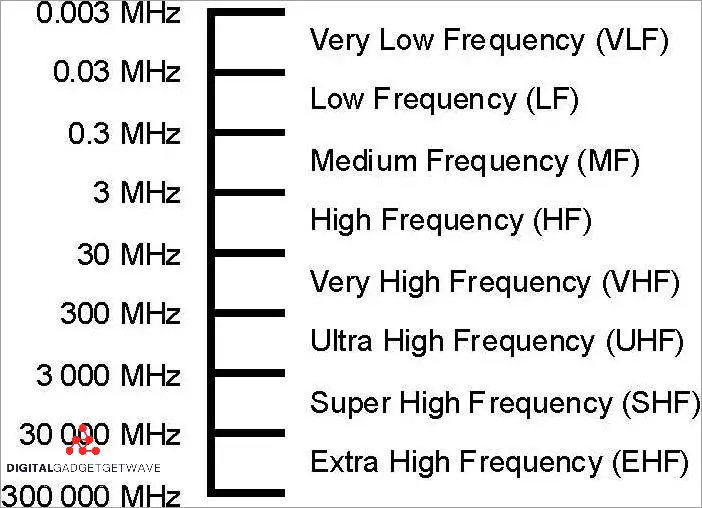
Hf frequency, also known as high frequency, is a key parameter in signal propagation in the electromagnetic spectrum. Several factors influence the behavior of hf waves and their effective use in communication.
Antenna Design: The design and size of the antenna used for transmitting and receiving hf signals play a crucial role in determining the frequency range. Different antenna designs are optimized for specific hf frequency bands.
Power and Amplitude: The power at which hf signals are transmitted and the amplitude of the waves affect the distance over which the communication can occur. Higher power and greater amplitude enable better hf signal propagation.
Interference and Noise: Interference and noise can disrupt hf signals and reduce the quality of received data. Various sources of interference, such as neighboring transmissions and atmospheric conditions, can affect hf frequency performance.
Modulation Techniques: The choice of modulation technique also affects hf frequency behavior. Different modulation schemes can alter the frequency range and bandwidth, impacting the efficiency and reliability of hf communication.
Propagation Conditions: The characteristics of the propagation medium, including atmospheric conditions and ionospheric variations, significantly influence hf signal propagation. Changes in these conditions can impact the range and quality of hf communication.
Frequency Band Allocation: The allocation of specific frequency bands for hf communication is regulated to ensure efficient use of the spectrum. Different frequency bands have varied propagation characteristics and may be assigned for specific applications.
By considering these factors, engineers and researchers can optimize hf frequency range usage and ensure reliable and efficient communication over long distances.
Atmospheric Conditions and Hf Frequency
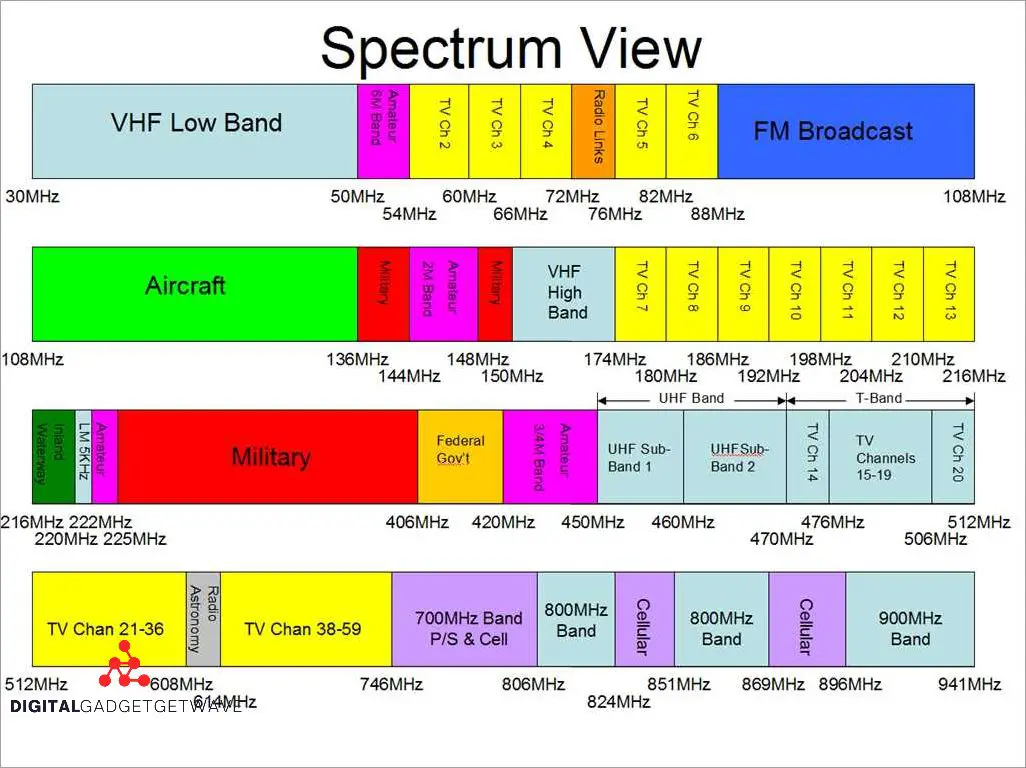
Atmospheric conditions play a crucial role in the communication and transmission of HF frequencies. HF, or high frequency, refers to the radio frequency range between 3 to 30 MHz. It is widely used for long-distance communication due to its ability to propagate over large distances and its resistance to atmospheric noise.
Modulation is the process of varying the characteristics of a signal to carry information. In HF communication, modulation is used to encode data onto the carrier signal, which is then transmitted through the atmosphere. Demodulation is the reverse process, where the received signal is extracted and decoded to retrieve the original data.
The range of frequencies within the HF band allows for efficient signal transmission and reception. The power of the transmitted signal determines the range and strength of the received signal. By adjusting the power, users can optimize their communication based on their specific needs and available resources.
The atmospheric noise in the HF frequency spectrum can interfere with communication. Different atmospheric phenomena, such as thunderstorms, solar flares, and ionospheric disruptions, can cause fluctuations in the received signal. This noise can degrade the quality of the communication and make it difficult to transmit and receive data effectively.
Antennas play a crucial role in HF communication. They are used to transmit and receive signals, and their design and placement can significantly impact the propagation and reception of the HF signal. Depending on the desired coverage and range, different types of antennas, such as wire antennas or directional antennas, can be used.
The amplitude of the HF signal can also be affected by interference from other sources, such as nearby electronics or radio transmissions. Advanced modulation techniques and signal processing algorithms are employed to minimize these interferences and improve the overall signal quality.
Overall, atmospheric conditions play a significant role in the transmission and reception of HF frequencies. Understanding the effects of atmospheric noise, propagation characteristics, and antenna design is crucial for ensuring reliable and effective HF communication.
Solar Activity and Hf Frequency Propagation
HF frequency propagation is heavily influenced by solar activity. Solar flares and sunspots can have a significant impact on the way HF signals are transmitted and received. The energy released during solar flares can cause ionization in the Earth’s upper atmosphere, which in turn affects the propagation of HF frequencies.
When solar activity is high, HF signals can experience increased absorption and reflection, leading to fluctuations in signal strength and the potential for interference. This can make communication over long distances more challenging, as the signals may be weaker and more susceptible to noise.
On the other hand, during periods of low solar activity, HF signals can propagate more efficiently over long distances. This is because the ionosphere is less disturbed, allowing for a smoother transmission and reception of HF signals. In such conditions, HF bands are often used for long-range communication and data transmission.
HF frequencies in the range of 3 to 30 MHz are particularly affected by solar activity. The ionosphere acts as a waveguide, with different layers reflecting and refracting the HF waves. This causes the HF signals to bounce between the Earth’s surface and the ionosphere, allowing for long-distance communication.
Factors such as the power and wavelength of the HF signal, as well as the angle of incidence, also play a role in HF frequency propagation. Modulation techniques such as amplitude modulation (AM) and demodulation help encode and decode the data transmitted over HF frequencies. Antennas designed for the HF band are used to transmit and receive these signals efficiently.
Overall, understanding solar activity and its impact on HF frequency propagation is crucial for effective communication and data transmission over the HF band. By monitoring solar activity and adjusting transmission parameters accordingly, interference and noise can be minimized, ensuring reliable communication over long distances.
Geographic Location and Hf Frequency Reception
When it comes to receiving HF frequencies, geographic location plays a crucial role. The range of frequencies that can be received varies depending on the location and the physical characteristics of the terrain. In general, higher frequencies are more easily received in urban areas due to less interference from natural phenomena and man-made noise sources.
Data reception in HF frequency bands can be affected by various factors such as atmospheric conditions, solar activity, and the presence of other electromagnetic waves. Noise from sources like power lines, electronic devices, and even lightning can interfere with the reception of HF frequencies. Amplitude, phase, and frequency modulation techniques are used to transmit data over the HF spectrum.
The selection of the appropriate band for HF wave transmission depends on factors like the distance of the receiver, frequency allocation regulations, and the desired signal quality. The power carried by the signal and the efficiency of the transmitting antenna are also crucial factors in the reception of HF frequencies.
Propagation characteristics of HF waves vary with frequency, time of day, and season. These behaviors include reflection, refraction, diffraction, and absorption. These properties of the HF waves allow for long-distance communication through multiple reflections from the ionosphere. However, interference and noise can still affect the clarity and strength of the received signal.
In order to optimize the reception of HF frequencies, proper antenna selection and placement are essential. A well-designed receiving antenna can help minimize interference and maximize the signal power. Additionally, signal processing techniques such as demodulation can be applied to improve the quality of the received HF signal and extract the desired information.
FAQ about topic “Hf Frequency Range: Everything You Need to Know”
What is the frequency range of Hf?
Hf stands for High Frequency, and its frequency range is usually between 3 to 30 megahertz (MHz).
Why is the Hf frequency range important?
The Hf frequency range is important because it is used for long-distance communication, especially in the field of radio broadcasting, amateur radio, and aviation.
How is the Hf frequency range different from other frequency ranges?
The Hf frequency range is different from other frequency ranges because it is capable of traveling long distances by bouncing off the ionosphere, which allows for long-range communication.
What are the advantages of using the Hf frequency range?
There are several advantages of using the Hf frequency range. Firstly, it can cover large areas with fewer transmission stations compared to other frequency ranges. Secondly, it is less affected by obstacles like buildings and terrain. Lastly, it is capable of reliable long-range communication even in remote and inaccessible areas.
Can the Hf frequency range be used for data transmission?
Yes, the Hf frequency range can be used for data transmission. However, its data transmission capacity is lower compared to other frequency ranges like VHF or UHF. It is commonly used for transmitting slow-speed digital data, such as email, weather reports, and Morse code.


